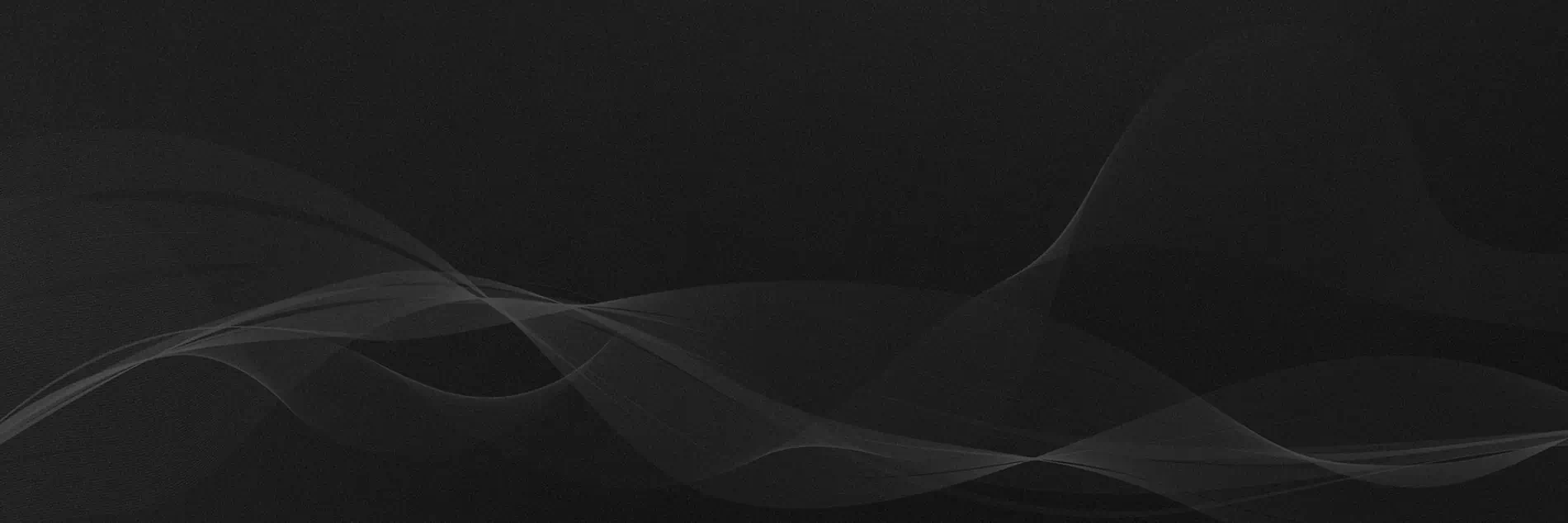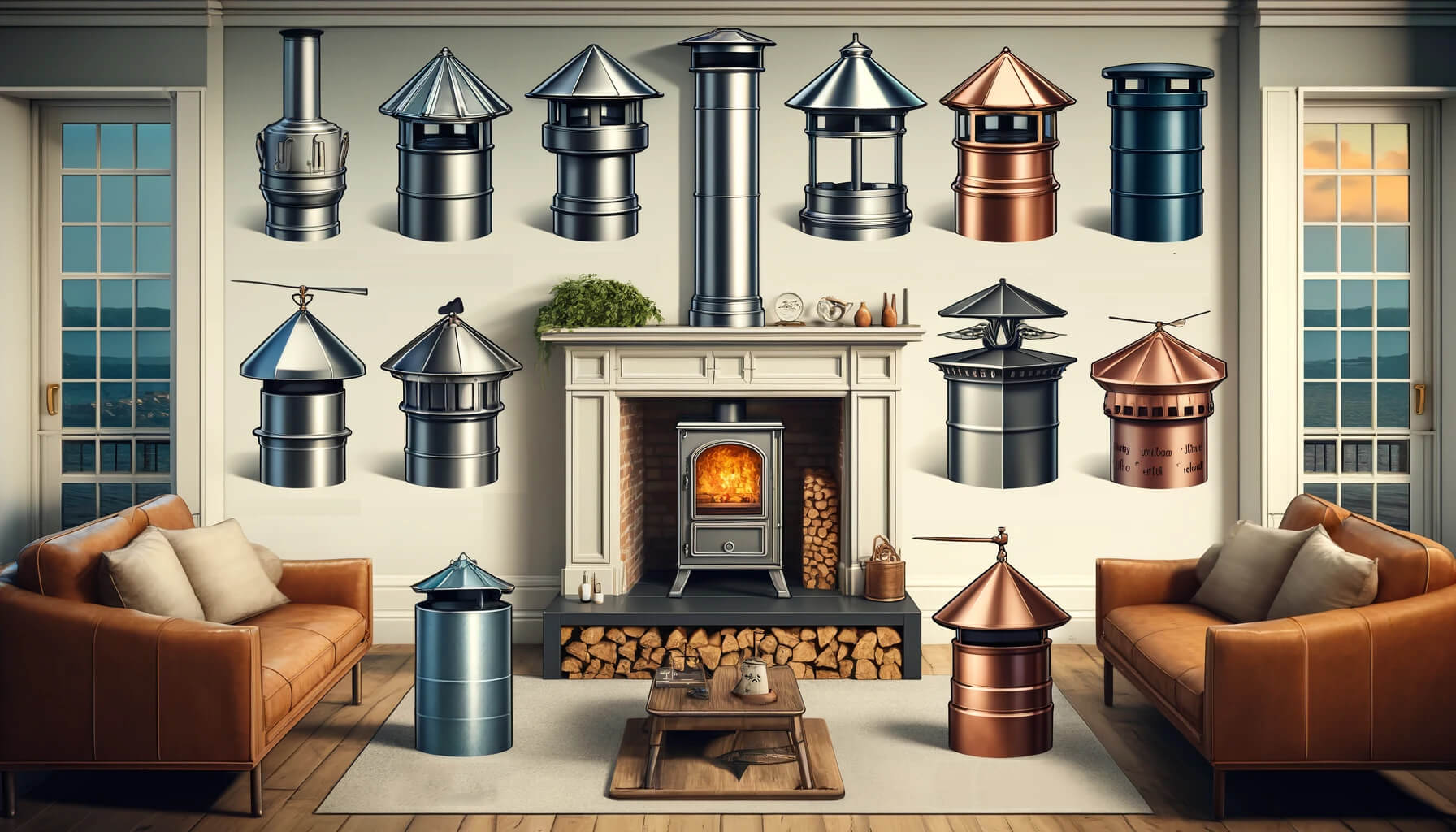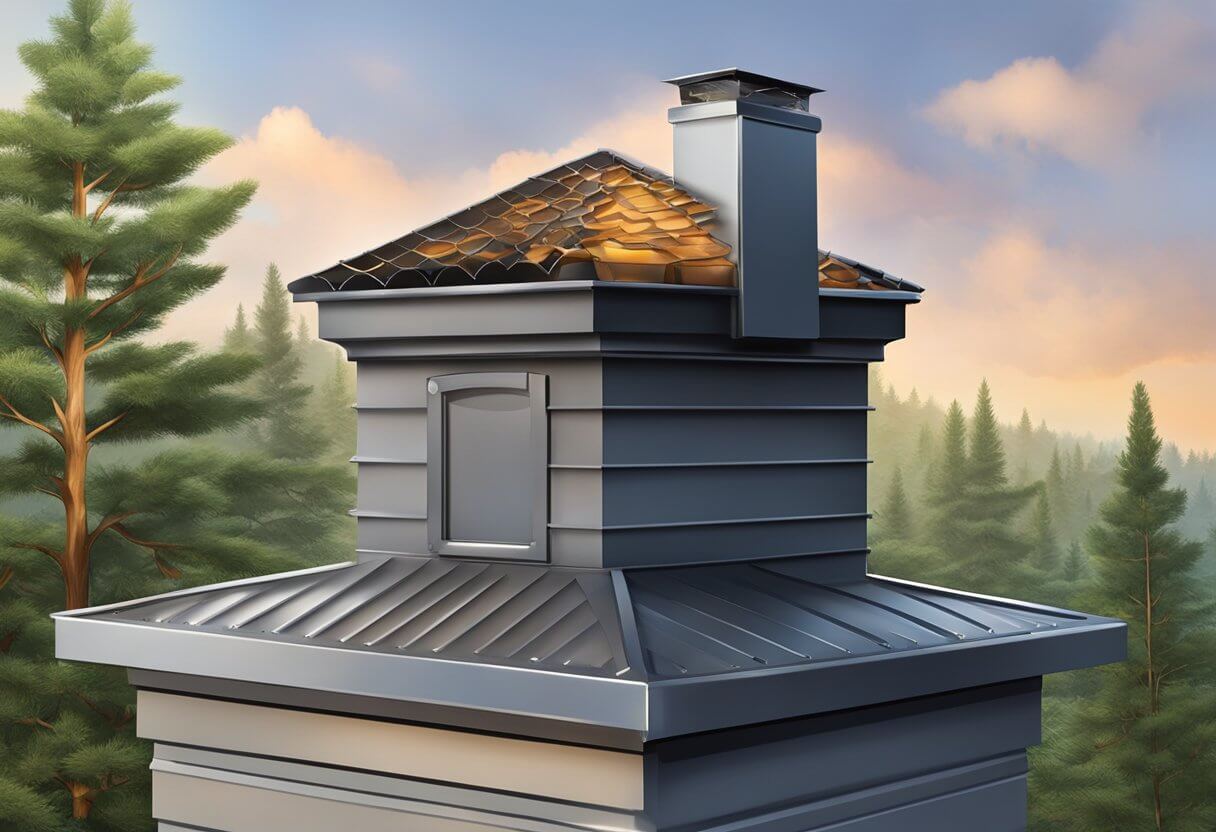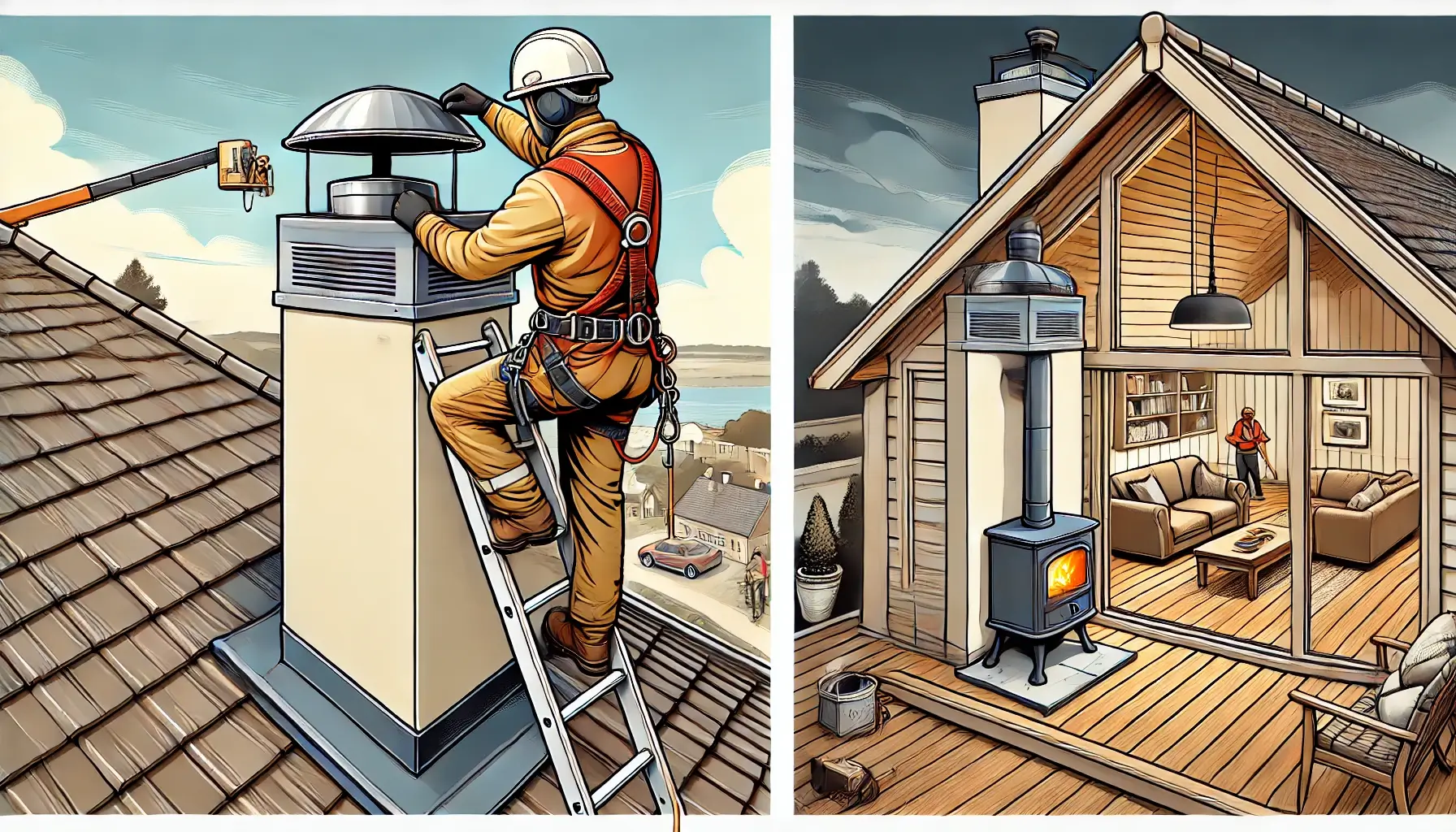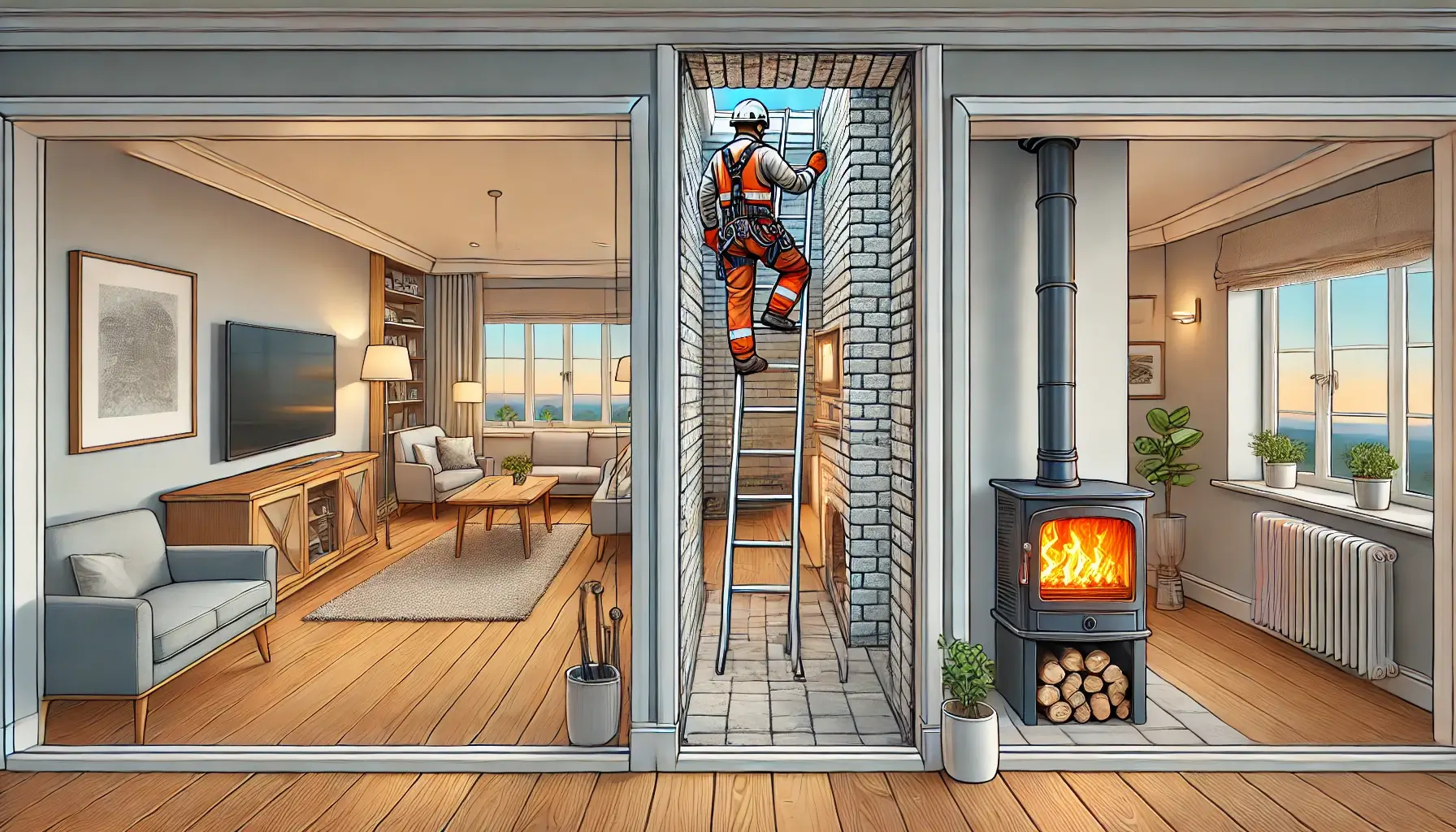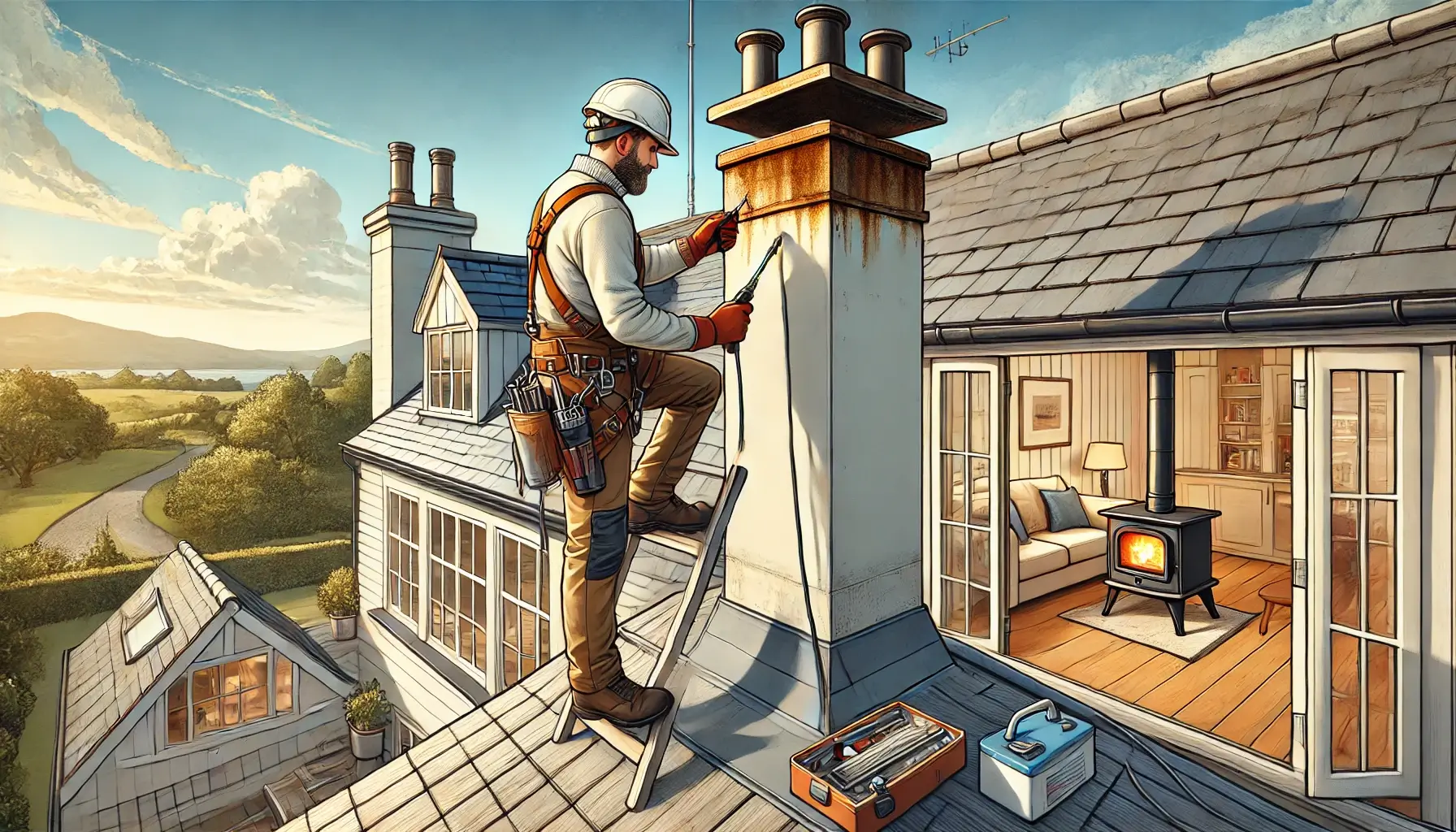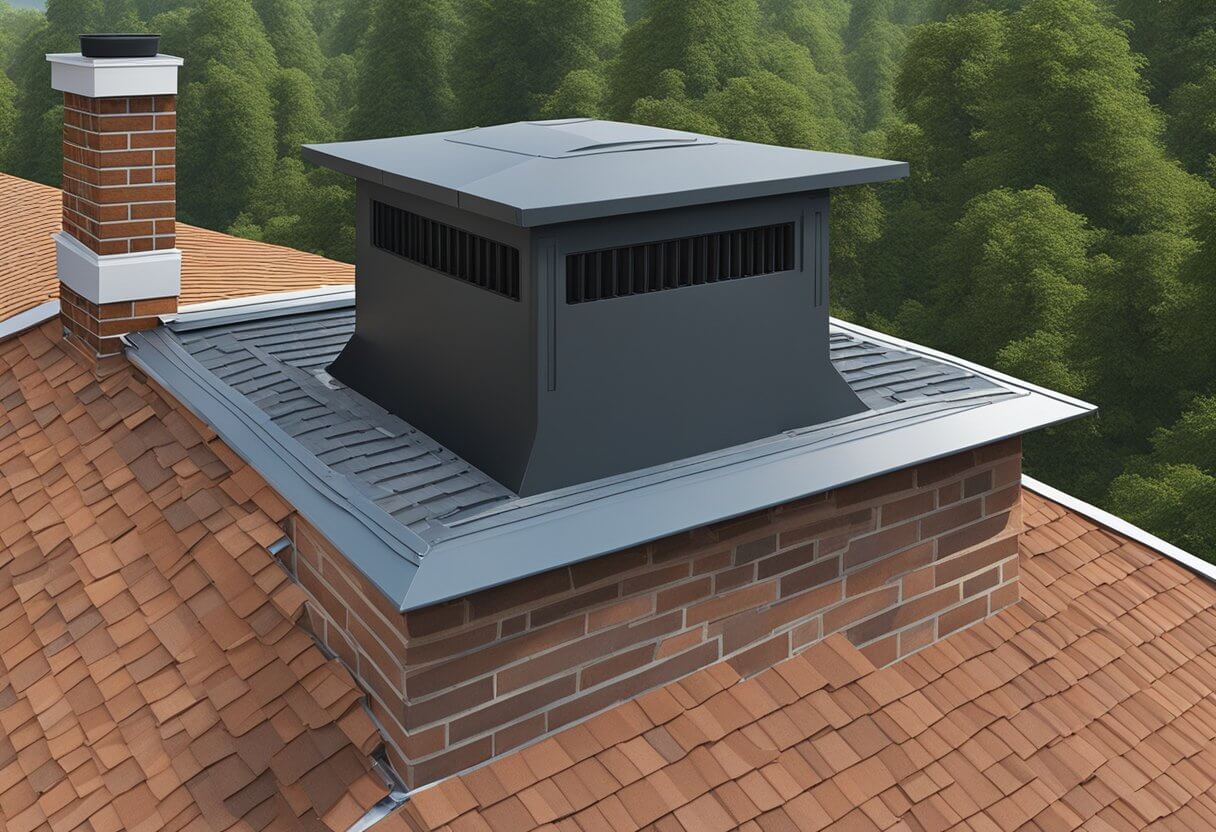Comprehensive Guide to Chimney Covers: Types, Benefits, and Installation Tips Explained
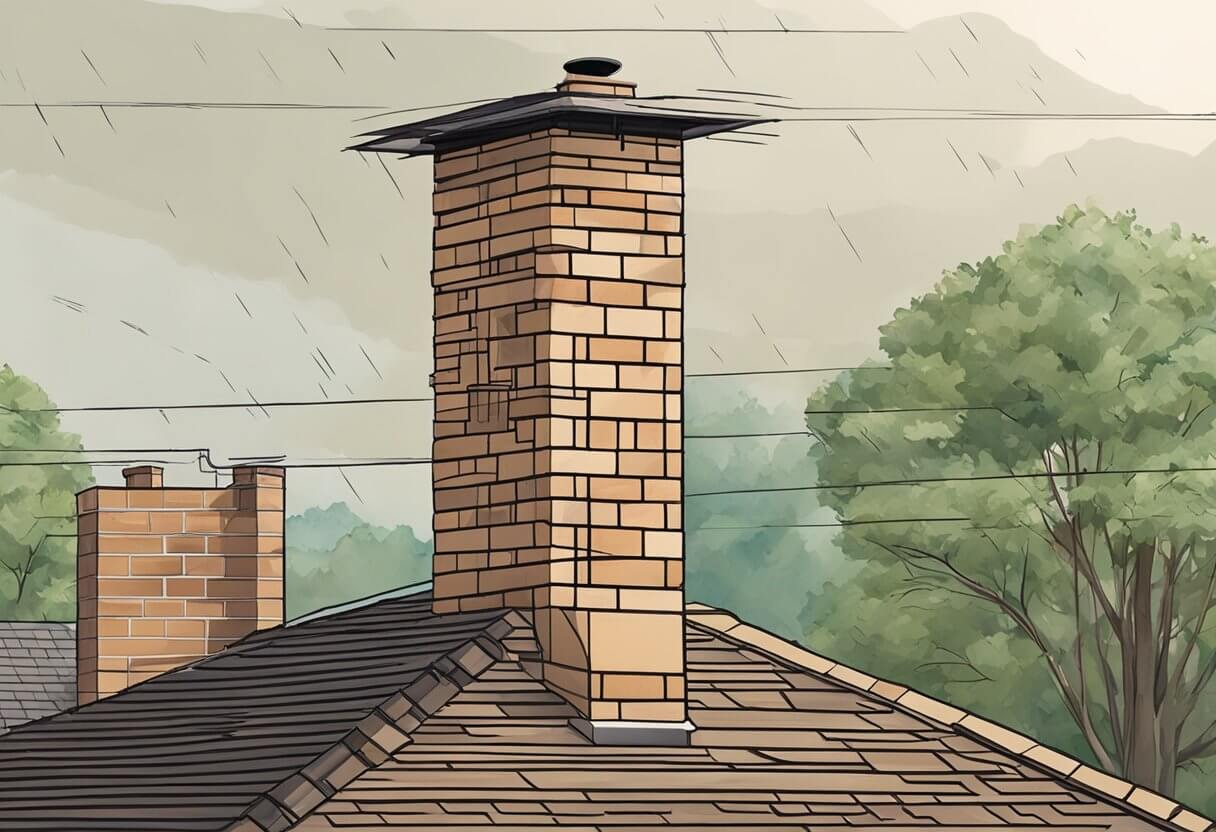
Introduction
Chimney covers are essential for protecting your home and enhancing the efficiency of your chimney system. By keeping debris, animals, and moisture out, they significantly improve the safety and longevity of your chimney. Understanding the different types of chimney caps and their benefits ensures you make the best choice for your needs.
There are various chimney caps available, each serving a specific purpose. From standard caps to draft-inducing and high-wind caps, selecting the right one depends on your home’s requirements and local weather conditions. We’ll provide easy-to-follow installation tips to help you get the job done safely and effectively.
Regular maintenance and inspection of your chimney cap are crucial. This helps prevent common problems and ensures continued protection and efficiency. We’ll also address common challenges and troubleshooting tips, along with answers to frequently asked questions, to help you keep your chimney in top shape.
Key Takeaways
- Various types of chimney caps serve different purposes and requirements.
- Installing a chimney cap offers significant benefits like protection and safety.
- Regular maintenance and inspections are essential for optimal performance.
Types of Chimney Covers
In this section, we’ll explore different types of chimney covers, their features, and the benefits they bring to your home. We will discuss single-flue caps, outside mount caps, and custom chimney covers, focusing on their construction materials and designs.
Single-Flue Caps
Single-flue caps are designed to cover an individual chimney flue. They are commonly made from materials such as stainless steel, copper, galvanized steel, and sometimes aluminum. These caps provide protection against rain, snow, and animals like birds and squirrels.
Stainless steel and copper caps are known for their durability and rust-proof properties. Galvanized steel caps are more affordable but may rust over time. Aluminum caps are lightweight but less common due to their lower durability.
These caps usually come in various shapes and sizes including round chimney caps to fit different types of chimney pipes. A well-fitted single-flue cap can also help improve the draft of your chimney, making your fireplace more efficient.
Outside Mount Caps
Outside mount caps are designed to cover the entire chimney top, rather than just a single flue. These caps are usually custom-made to fit the exact dimensions of your chimney, providing comprehensive protection.
Stainless steel is a popular choice for outside mount caps due to its strength and resistance to rust. Copper is another option, offering a long lifespan and an appealing look that can enhance the aesthetic of your home. Galvanized steel is a budget-friendly option, but it may require more frequent maintenance.
Outside mount caps are especially useful for chimneys with multiple flues. They offer a robust barrier against the elements and keep out debris and animals.
Custom Chimney Covers
Custom chimney covers are tailored to meet specific needs and preferences. These covers can be made from a variety of materials, including stainless steel, copper, galvanized steel, and aluminum. Custom covers are ideal when standard sizes and shapes do not fit your chimney.
We can design these covers to match the architectural style of your home, providing both functionality and visual appeal. In addition, custom covers can offer enhanced features such as adjustable fans to improve draft, which can be especially beneficial for managing the efficiency of your fireplace.
Investing in a custom cover ensures a precise fit and maximum protection for your chimney. This can prolong the life of your chimney and reduce the need for frequent repairs.
Benefits of Installing a Chimney Cap
Installing a chimney cap provides essential benefits like protecting your home from unwanted debris and animals, reducing moisture and water damage, and improving airflow. These advantages help ensure your chimney operates efficiently and safely.
Protection from Debris and Animals
A chimney cap acts as a barrier, keeping debris out of the chimney. Without a cap, leaves, twigs, and other trash can clog the flue. This blockage can lead to poor ventilation and even chimney fires.
Animal intrusion is another major concern. Birds, squirrels, and other critters often seek standard in chimneys. A chimney cap prevents them from entering and building nests. This keeps the chimney clear and avoids potential health hazards from animal droppings and nests.
Reduction of Moisture and Water Damage
Moisture can severely damage a chimney over time. Rain, snow, and ice can seep into the masonry, causing cracks and structural issues. A chimney cap helps prevent this by acting as a shield against precipitation.
By reducing water penetration, we can extend the life of the chimney’s materials. This protection minimizes the risk of costly repairs and maintains the structural integrity of the chimney. In the long run, installing a cap is a cost-effective solution to avoid water damage.
Prevention of Downdrafts and Improved Airflow
Downdrafts occur when outside air flows down the chimney, instead of allowing smoke and gases to escape. This can create unpleasant odors and smoke backup inside the home. A chimney cap helps to prevent downdrafts by blocking strong winds from entering the chimney.
With a cap in place, airflow is regulated more effectively. It ensures that the smoke and gases exit efficiently. Proper ventilation is crucial for safety and helps maintain a comfortable indoor environment.
Chimney Cap Installation Tips
Proper chimney cap installation is key to preventing water damage, critter intrusions, and ensuring efficient chimney operation. We’ll cover measurements, tools, and the entire installation process.
Appropriate Measurement and Sizing
Before starting, we need to measure the chimney flue accurately. This ensures the cap fits securely.
Using a measuring tape, note the width and length of the flue opening. For round flues, measure the diameter. If the chimney has multiple flues, measure each one separately.
Measure twice to avoid errors. Applying these steps helps find a cap that matches perfectly. This precise fit prevents drafts and ensures the cap functions properly.
Using these measurements, we can now purchase the appropriately sized cap. A snug fit is critical to keep out unwanted elements and maintain the chimney’s efficiency.
Required Tools and Materials
Tools:
- Ladder (firmly secured)
- Measuring tape
- Stiff-bristled brush
- Caulk gun
- Impact driver or drill
Materials:
- Chimney cap
- Masonry screws
- High-temperature silicone adhesive
Having the right tools and materials is crucial. A secured ladder ensures safety. The caulk gun and brush help with surface preparation. The silicone adhesive and masonry screws are essential for a strong, long-lasting attachment.
Step-by-Step Installation Guide
-
Clear the Area: Remove old cap, if any, and clean the flue with a stiff-bristled brush to ensure a clear surface.
-
Position the Cap: Place the new chimney cap on the flue to check the fit. Adjust if necessary to ensure it sits perfectly. For a universal cap, unscrew wing nuts and position it so the mesh covers the flue opening.
-
Apply Adhesive: Use a caulk gun to apply high-temp silicone adhesive around the perimeter of the cap base. Avoid getting adhesive into pilot holes to keep the cap steady during screw placement.
-
Secure the Cap: Align the cap and drive masonry screws through the pilot holes with an impact driver. Repeat this step for all screws, verifying the cap remains level and secure.
These detailed steps ensure a proper, reliable installation. For more visual guidance, refer to this Complete Guide.
Maintenance and Inspection
Chimney covers play a crucial role in preventing debris and animals from entering the chimney. They also protect against harsh weather conditions. It’s important to regularly maintain and inspect these covers to ensure they function properly and extend their lifespan.
Routine Cleaning and Upkeep
Regular cleaning of chimney covers helps prevent blockages and buildup of creosote, a flammable substance. We should remove leaves, twigs, and other debris that may accumulate on the cover. Using a brush or vacuum attachment, gently clean the mesh and other parts of the cover.
For more stubborn residue, mild detergent with water works well. Avoid harsh chemicals, as they can damage the cover material. Ensure all cleaning products are thoroughly rinsed off to prevent any residue buildup. It’s also beneficial to clean the surrounding chimney area to maintain overall chimney health.
Annual Inspections for Structural Integrity
Annual inspections are vital for checking the structural integrity of chimney covers. During these inspections, we need to look for any signs of rust, corrosion, or wear. These issues can compromise the cover’s effectiveness.
An inspection should also assess how securely the cover is attached to the chimney. Loose or improperly attached covers can become a hazard during strong winds. If we find any issues, repair or replace the cover promptly to maintain safety and functionality.
Professional chimney sweeps can provide detailed inspections. They have the tools and expertise to identify problems we might miss. Regular inspections not only extend the life of the chimney cover but also ensure that the chimney itself remains safe to use.
Recognizing Signs of Damage or Wear
It’s essential to recognize early signs of damage or wear. Look for cracks, holes, or warping in the metal. These issues can indicate that the cover is no longer providing adequate protection. Rust spots or excessive wear areas may suggest the need for a replacement.
Additionally, we should monitor for any pest infestation. Critters finding their way into the chimney might indicate gaps or damages in the cover. Observing water damage or stains around the chimney could also signal that the cover isn’t effectively blocking rain.
By addressing these signs early, we can prevent minor issues from becoming major problems. This proactive approach helps ensure our chimney system remains safe and efficient.
Common Challenges and Troubleshooting
In maintaining chimney covers, facing problems like rust, blockages, and wildlife intrusion is common. Addressing these effectively ensures the chimney’s efficiency and safety.
Dealing with Rust and Corrosion
Rust and corrosion can severely damage chimney covers, reducing their effectiveness. To combat this, we should regularly inspect the metal parts of the chimney cover. Using rust-resistant materials, such as stainless steel or galvanized metal, can help prolong the life of the cover.
For existing rust, remove it with a wire brush and apply a rust-neutralizing primer. Additionally, applying a high-temperature paint can provide an extra layer of protection. Regular maintenance checks for rust and corrosion should be scheduled, especially in humid environments where metal deterioration is more likely.
Addressing Blockages and Obstructions
Blockages in chimney covers can lead to poor ventilation and even hazardous conditions. Leaves, twigs, and other debris are common culprits. It’s essential to have a routine cleaning schedule to clear any obstructions.
Using a chimney cap with a mesh screen can prevent larger debris from entering. However, ensure the mesh size is appropriate to avoid getting clogged with small particles. If the chimney is still experiencing blockages, professional inspection and cleaning might be necessary to identify the root cause and prevent future issues.
Preventing Wildlife Entry and Nesting
Wildlife like birds, squirrels, and raccoons can find chimneys attractive for nesting. This not only blocks the chimney but can also lead to foul odors and health risks. Installing a chimney cap with a built-in animal guard can effectively prevent wildlife from entering.
We should also inspect the chimney cap regularly to make sure it hasn’t been damaged or displaced by animals. In cases where wildlife has already nested, it’s best to contact a professional to safely remove the animals and clean the chimney. Regular inspections and maintenance will help keep our chimney free from unwanted guests.
Frequently Asked Questions
In this section, we address common questions about chimney covers, including types, regulations, materials, and installation tips.
What are the different types of chimney covers available?
There are various types of chimney covers, including chimney caps, chase covers, and top-sealing dampers. Each type serves a specific purpose, such as preventing debris and animals from entering the chimney or improving energy efficiency.
Is it mandatory to have a chimney cap as per building codes?
Building codes vary by location, but many areas recommend or mandate the installation of a chimney cap. It’s best to check with local building authorities to ensure compliance with the regulations in your area.
How can I choose the best chimney cap to prevent downdrafts?
To prevent downdrafts, select a chimney cap specifically designed for this purpose. Wind directional and vacuum chimney caps are effective choices, as they help redirect airflow away from the chimney, reducing the chance of downdrafts.
What materials are recommended for a long-lasting chimney cover?
Stainless steel and copper are the most highly recommended materials for long-lasting chimney covers. Both materials are resistant to rust and corrosion, ensuring durability and longevity even in harsh weather conditions.
Can you explain the benefits of installing a chimney cap?
Installing a chimney cap offers several benefits. It prevents rain, snow, and debris from entering the chimney, reducing the risk of water damage. It also keeps animals and birds from nesting inside. Additionally, it enhances safety by preventing sparks from escaping and potentially causing a fire.
What are the steps for properly installing a chimney cap on a masonry chimney?
To install a chimney cap on a masonry chimney, first, measure the dimensions of the flue. Next, select a cap that fits these dimensions. Follow the manufacturer’s instructions to secure the cap, often using screws or clamps. Ensure it’s tightly fastened to prevent it from coming loose during high winds.

 We Ship Anywhere USA & Canada
We Ship Anywhere USA & Canada

